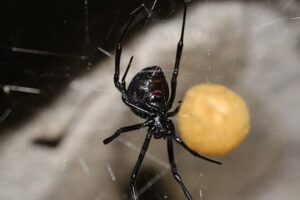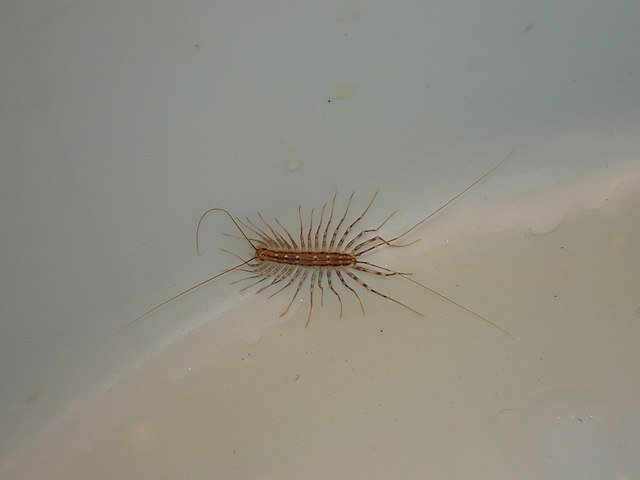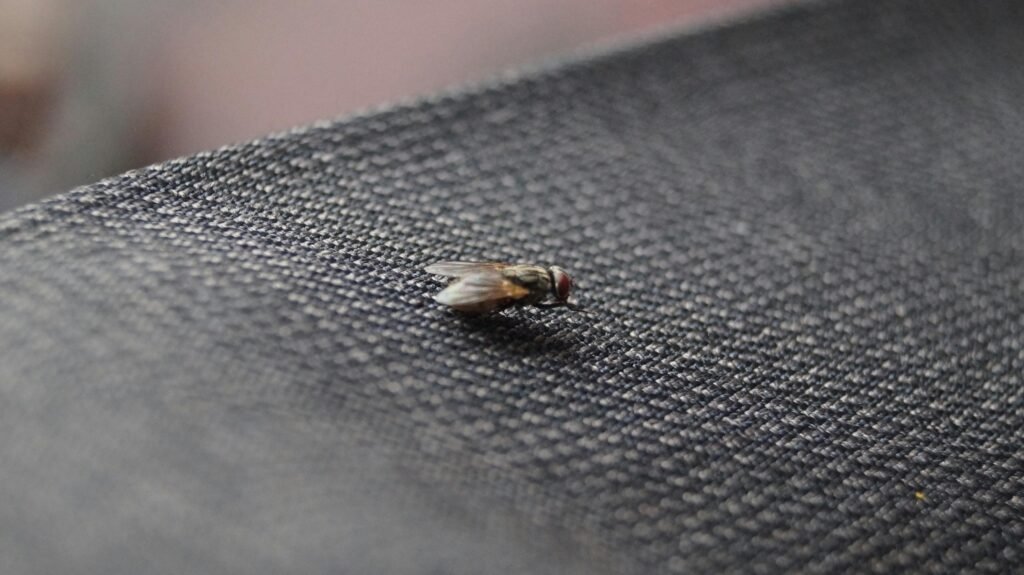Black Widow Spider: Identification, Risks, and Complete Control Guide
 Few spiders are as infamous as the black widow spider (Latrodectus mactans). Known for its shiny black body and the iconic red hourglass marking, this spider has earned a reputation as one of the most dangerous arachnids to humans. While its venom is potent, it’s important to remember that black widow bites are relatively rare, and fatalities are extremely uncommon.
Few spiders are as infamous as the black widow spider (Latrodectus mactans). Known for its shiny black body and the iconic red hourglass marking, this spider has earned a reputation as one of the most dangerous arachnids to humans. While its venom is potent, it’s important to remember that black widow bites are relatively rare, and fatalities are extremely uncommon.
Black widows belong to the same family as false widows (Steatoda spp.), which are often mistaken for them. Unlike harmless lookalikes, true black widows are medically significant and can cause severe neurological symptoms if they bite. Their role as both feared predators and beneficial pest controllers makes them an interesting yet concerning species for homeowners, gardeners, and pest control professionals alike.
This article explores everything you need to know about black widow spiders: how to identify them, their biology, where they live, the risks they pose, and the best strategies for prevention and control.
Identification
The black widow spider (Latrodectus mactans) is instantly recognizable:
Color: Glossy black body with a red hourglass marking on the underside of the abdomen. Some may have orange or yellow variations.
Size: Females are larger, around 25–38 mm (1–1.5 inches) including leg span, while males are smaller and less dangerous.
Shape: Rounded abdomen, thin legs, and smooth, shiny texture.
Webs: Unlike orb-weaving spiders, black widows spin irregular, messy webs close to the ground, often in sheltered areas.
They are sometimes confused with the false widow spider (Steatoda grossa), which lacks the sharp red hourglass and is less harmful to humans. Proper identification is critical, especially since control strategies often depend on confirming the species.
Biology and Ecology
Black widows are nocturnal hunters. Their venom contains latrotoxin, a neurotoxin that affects nerve communication, paralyzing prey such as flies, beetles, and even small lizards.
Key biological traits include:
Lifespan: Females can live up to 1.5 years; males rarely survive beyond mating.
Reproduction: Females lay several egg sacs, each containing 100–400 eggs. Spiderlings disperse quickly but face high mortality.
Behavior: Females are solitary and territorial. Males are more active during mating season, risking their lives to reproduce.
Predators: Birds such as sparrows, mud dauber wasps, and other spiders often prey on black widows.
Black widows prefer warm climates and build webs in dark, undisturbed places, such as garages, sheds, crawl spaces, and woodpiles.
Global Distribution
The southern black widow (Latrodectus mactans) is the most famous species in North America, particularly in the southern and eastern United States. However, related widow species occur worldwide:
Western black widow (Latrodectus hesperus) – Found in the western U.S. and Canada.
Northern black widow (Latrodectus variolus) – Found in the northeastern U.S. and southern Canada.
Mediterranean black widow (Latrodectus tredecimguttatus) – Common in Europe and parts of Asia.
Australian redback (Latrodectus hasselti) – Closely related, with similar venom effects.
This global distribution shows the adaptability of the genus Latrodectus, thriving in urban, rural, and semi-arid environments.
Risks and Damage
The black widow’s reputation comes from its venom, which is far more toxic than that of most spiders. While deaths are rare, the bite can cause:
Severe pain spreading from the bite site
Muscle cramps and abdominal rigidity
Sweating and nausea
Hypertension in severe cases
Children, the elderly, and immunocompromised individuals are at greater risk of complications.
Beyond medical issues, black widows create anxiety for homeowners and workers. They do not cause property damage like termites or carpenter ants, but their presence in homes, warehouses, or playgrounds poses psychological and safety concerns.
Signs of Infestation
Unlike pests such as cockroaches, black widows do not make colonies. Still, signs of infestation include:
Irregular webs: Dense, sticky webs in cluttered corners, under furniture, or in outdoor structures.
Spider sightings: Females often remain near the center of their web; spotting one is a strong indicator of others nearby.
Egg sacs: White, papery spheres attached to webs.
Prey remains: Insect carcasses caught and drained in webs.
Finding multiple webs in a confined space may indicate a serious infestation that needs professional inspection.
Control Methods
Managing black widows requires both environmental modification and targeted treatments:
Declutter – Remove piles of wood, cardboard, and unused items where spiders thrive.
Seal entry points – Close gaps around windows, doors, and vents.
Lighting adjustments – Outdoor lights attract insects, which in turn attract spiders. Switch to yellow “bug lights” to reduce attraction.
Vacuum webs – Regular cleaning disrupts their habitat.
Chemical control – Use approved residual insecticides in cracks and crevices where webs are found.
For large infestations, calling a licensed pest control service is strongly advised.
Advanced Approaches
Professionals often use Integrated Pest Management (IPM) for black widow control. This combines:
Monitoring: Sticky traps help confirm population levels.
Targeted insecticides: Pyrethroid-based sprays are common but must be used carefully to avoid resistance.
Biological control: Encouraging natural predators such as mud dauber wasps or geckos in outdoor settings can help reduce populations.
Education: Training residents to recognize and report sightings ensures long-term prevention.
Some research is exploring the potential use of pheromone traps or repellents to deter widow spiders, though these are still experimental.
Cultural and Historical Context
The black widow has long been a symbol of fear and danger in folklore. The female’s reputation for cannibalizing males after mating gave rise to the metaphor of the “black widow” as a dangerous, seductive woman.
In rural America, black widow bites were once common among farmers and workers moving firewood or tools from barns. Today, urbanization has shifted their habitats into suburban homes, yet they remain part of cultural storytelling, films, and even comic book mythology.
Their venom, paradoxically, has also inspired medical research. Scientists are studying latrotoxin for potential uses in understanding nerve function and developing treatments for neurological diseases.
FAQ Section
Q1: Are black widow bites deadly?
Fatalities are extremely rare with modern medical care. The venom is potent, but antivenom and hospital treatments are effective.
Q2: How do I know if I was bitten by a black widow?
Look for sharp, immediate pain, followed by muscle cramping, sweating, and nausea within hours. Seek medical care immediately.
Q3: Do black widows bite unprovoked?
No. They bite only when threatened or accidentally pressed against skin.
Q4: What’s the difference between a black widow and a false widow?
False widows (Steatoda grossa) are less dangerous and lack the distinct red hourglass marking. Their bites may cause mild reactions but are not medically serious.
Q5: Where are black widows most commonly found around the home?
They favor dark, sheltered areas such as garages, basements, woodpiles, sheds, and crawl spaces.
Q6: Can black widows be beneficial?
Yes. They prey on flies, beetles, and even cockroaches, making them natural pest controllers in some ecosystems.
Final Thoughts
The black widow spider (Latrodectus mactans) is a creature surrounded by myths, fear, and fascination. While its venom is undeniably potent, the spider itself is shy, reclusive, and unlikely to bite unless provoked. Most encounters happen when people unknowingly disturb webs in dark, sheltered places.
For homeowners and professionals, the key to managing black widows lies in awareness, prevention, and safe control practices. Removing clutter, sealing cracks, and reducing insect populations around the home go a long way toward keeping these spiders out. In cases of confirmed infestation, expert pest control services ensure safe elimination without unnecessary risk.
Beyond their feared reputation, black widows play a role in natural ecosystems by keeping insect populations in check. Understanding their biology and behavior allows us to respect their ecological function while minimizing human conflict.
Disclaimer
This article is for informational purposes only. Pest control laws and approved chemicals vary by country. For best results and legal safety, we strongly recommend contacting a licensed pest control professional in your local area. Always make sure that the pest control technician is properly certified or licensed, depending on your country’s regulations. It’s important to confirm that they only use approved products and apply them exactly as instructed on the product label. In most places in Europe, UK, or USA, following label directions is not just best practice—it’s the law.
Author Bio
Nasos Iliopoulos, BSc Agronomist & Certified Pest Control Expert
Scientific Director – Advance Services (Athens, Greece)
Licensed Pest Control Business – Ministry of Rural Development & Food (GR)
With a strong background in agronomy and pest management, Nasos Iliopoulos specializes in safe, science-based control methods for insects, arachnids, and rodents. He combines academic knowledge with hands-on field experience to deliver reliable pest control strategies for homes and businesses.
References
Wikipedia - Latrodectus
Britannica - Black Widow


